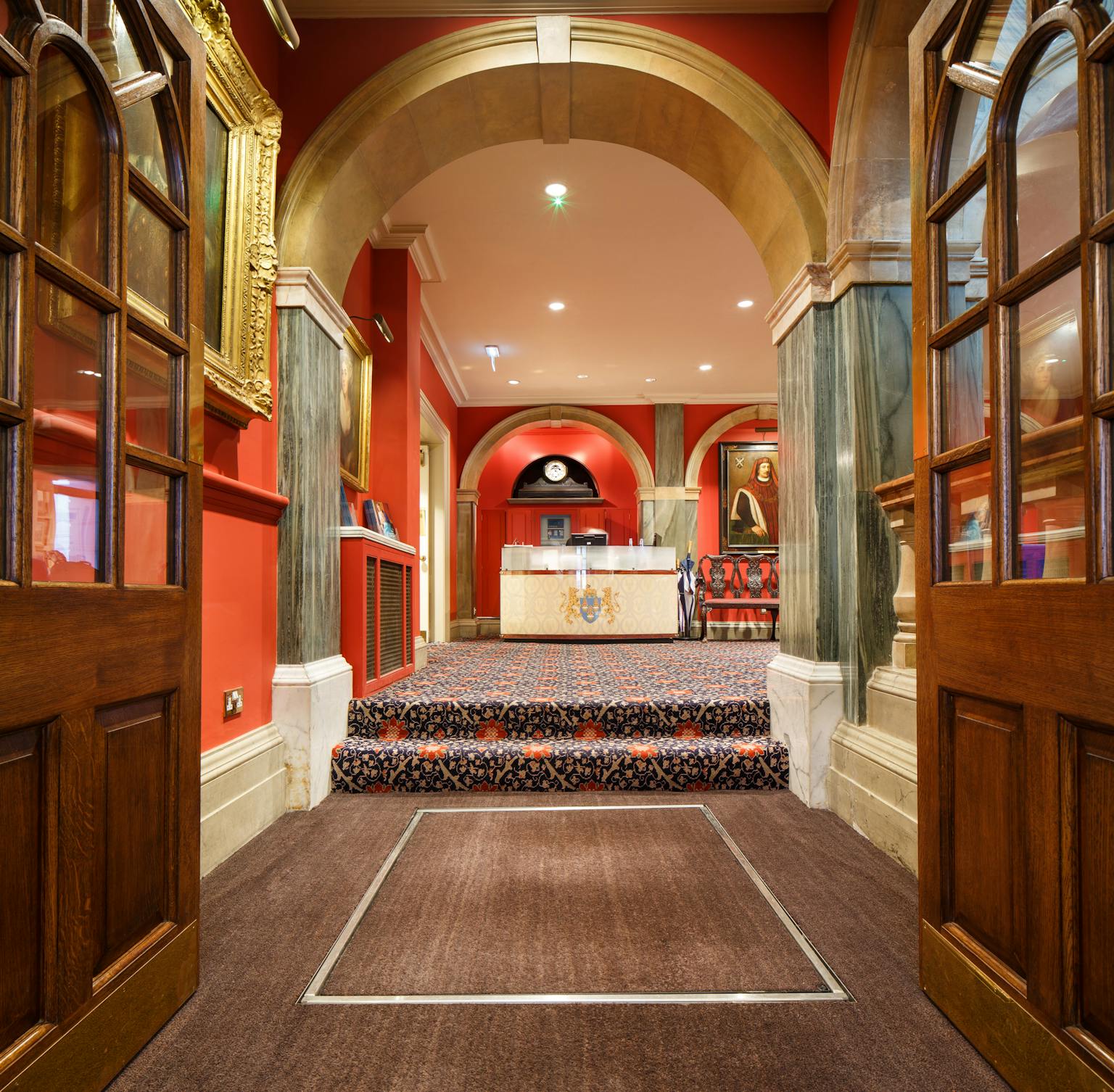
Drapers' Hall, London
Restoration of a grand livery company building
- Location
- London & South East
- Client
- The Drapers' Company
- Awards
- The Stone Federation Awards: Restore and Restoration 2020
As retained architects for Drapers' Hall, Purcell has overseen an ambitious programme over seven years of restoration, conservation and improvements on behalf of The Drapers’ Company, one of the City of London’s livery companies.
The works, culminating in the spectacular restoration of the building’s main events space, have included a broad scale of projects aimed at conserving and reinvigorating the grand building –ensuring it remains a welcoming destination for its various members, guests, and visitors.
After starting out as a trade association for wool merchants, the Drapers’ Company has evolved into a philanthropic grant-giving organisation, with a programme of charitable engagements based out of their historic Grade II*-listed building on Throgmorton Street, in the heart of the City of London.
The ongoing programme of works have revitalised the building after centuries of continuous use and alteration, updating it for modern users.




Masterplan
Having produced a masterplan study for the client, it highlighted short- and long-term interventions needed for the hall to continue providing the optimum quality and service today and for future generations. The proposals ranged from subtle upgrades to key reception rooms, which are of exceptional quality, through to vital support spaces such as kitchens and storage areas that needed modernisation.

The Livery Hall
Our latest project is the conservation and redecoration of the Livery Hall, arguably the grandest space in the building, with its painted ceiling inspired by Inigo Jones’ Banqueting House.
Alongside crucial stabilisation and conservation works to the ceiling we led the hall’s redecoration, informed by paint analysis and detailed research, including the replacement of the unsympathetic lighting scheme. We worked with Historic England and City of London Conservation Officers to develop the scheme; they were consulted throughout the design process, fully supporting and consenting to the proposed scheme.
The major interventions to the Livery Hall re-presentation project included: reinforcement of the fibrous plaster ceiling wads; repairs to the hall's timber roof structure; repair of the fibrous plaster ceiling; cleaning, repair, conservation, and re-varnishing of the Harbert Draper ceiling paintings dating from 1902-1910; repair and cleaning of the marble finishes; repair and French polishing of the timber panelling; and redecoration of the Livery Hall.



Part of the success of the project was our ability to adapt to the circumstances and collaborate with the client to seize available opportunities. The works were planned for completion in three phases during the annual eight-week summer shutdown. However, unable to let the hall due to COVID-19 restrictions, we recommended and successfully delivered the execution of the scheme in a single phase, making a considerable cost saving for our client. Recognising the logistical restrictions and potential opportunities meant we were able to work with the client to fulfil their commercial needs.

The Courtyard
A recent phase of our team’s works saw the hall’s internal courtyard cleaned and repaired, undoing bomb damage incurred during WWII.
With access to the courtyard restricted and materials and equipment having to be carried through the building, our design team applied careful consideration and care to protect the historic interiors and minimise disruption to users. The now-completed two-year programme breathes new life into the building, allowing the blossoming programme of commercial events within the Livery Hall to thrive.




Accessibility Improvements
Accessibility challenges in historic buildings are a common issue and something Purcell have encountered and resolved in numerous projects. At Drapers’ Hall, a lack of dedicated step-free access from the street to the main spaces meant events were restrictive and the Drapers’ Company wanted a sensitive solution.
After an options appraisal and design development, a hidden vertical platform lift was designed with minimal visual disruption and minimal impact to the historic fabric. Reviews have been positive and our interventions enable the Drapers’ Hall to be universally enjoyed.
Studio: Canterbury





